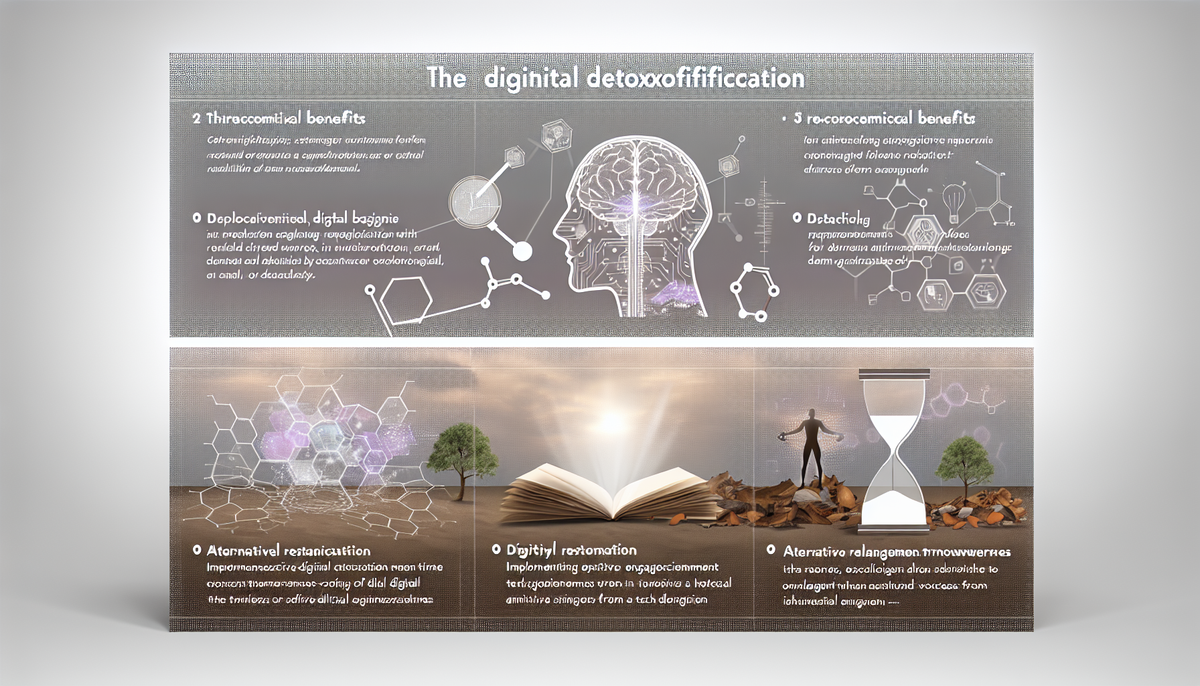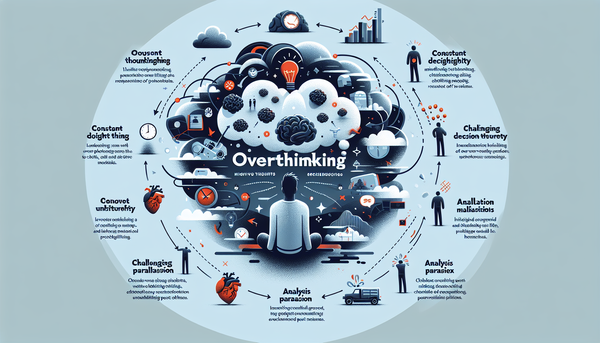Digital Detox for Physical and Mental Clarity

In our hyperconnected world, the average person checks their smartphone 96 times per day, spending over 7 hours daily staring at screens. This constant digital bombardment has created an unprecedented crisis of attention, sleep disruption, and mental fatigue. Digital detox—the practice of intentionally disconnecting from electronic devices—has emerged as a powerful antidote to technology overload, offering profound benefits for both physical and mental well-being.
The concept of digital detoxification goes beyond simply putting your phone down. It represents a strategic approach to reclaiming cognitive clarity, emotional stability, and physical vitality through mindful technology consumption. Research consistently demonstrates that periodic breaks from digital devices can reset our neurological systems, reduce stress hormones, and restore our natural capacity for deep focus and genuine human connection.
This comprehensive exploration examines the scientific foundation of digital wellness, practical implementation strategies, and sustainable approaches to achieving a healthier relationship with technology. By understanding both the physiological impacts of constant connectivity and evidence-based solutions for digital balance, you can transform your relationship with technology from one of dependency to intentional engagement.
The Science Behind Digital Detoxification
Neuroscientific research has revealed compelling evidence that our brains are physically altered by constant digital stimulation. The prefrontal cortex, responsible for executive function and attention regulation, becomes overworked when continuously processing digital information streams. This neurological strain manifests as decreased working memory, impaired decision-making abilities, and reduced capacity for sustained concentration.
Studies conducted at Stanford University demonstrate that heavy multitaskers—those who regularly engage with multiple digital devices simultaneously—show reduced density in the anterior cingulate cortex, the brain region responsible for cognitive and emotional control. This structural change correlates directly with increased anxiety, depression, and attention disorders commonly observed in populations with high digital device usage.
The dopamine reward system, designed to motivate survival behaviors, becomes dysregulated through constant digital stimulation. Each notification, social media interaction, and digital reward triggers dopamine release, creating addiction-like patterns that mirror those seen in substance abuse disorders. Digital detox periods allow these neural pathways to reset, restoring natural dopamine sensitivity and reducing compulsive technology-seeking behaviors.
Cognitive Benefits of Reduced Screen Time
Clinical trials examining the effects of screen time reduction consistently demonstrate significant improvements in cognitive performance within just 72 hours of digital detox initiation. Participants show enhanced working memory capacity, improved sustained attention spans, and increased creative problem-solving abilities. These cognitive gains result from reduced cognitive load, allowing the prefrontal cortex to recover from chronic overstimulation.
Memory consolidation, the process by which short-term memories become stable long-term memories, improves dramatically during digital detox periods. The constant information influx from digital devices interferes with the brain's natural memory consolidation processes, which primarily occur during periods of rest and reduced stimulation. Participants in digital detox studies report improved recall abilities and enhanced learning capacity within one week of reduced screen exposure.
Information processing speed and accuracy increase substantially when individuals limit their digital device usage. The brain's ability to filter relevant information from irrelevant stimuli—known as selective attention—strengthens during technology breaks. This enhancement translates to improved productivity, better decision-making, and increased mental clarity in both professional and personal contexts.
Research conducted at the University of California, Irvine, reveals that it takes an average of 23 minutes to fully regain focus after a digital interruption. Individuals practicing digital detox principles report maintaining focus for extended periods, with some achieving flow states lasting several hours—a stark contrast to the fragmented attention patterns common in heavy technology users.
Neurochemical Impact of Constant Connectivity
Cortisol, the primary stress hormone, remains chronically elevated in individuals who maintain constant digital connectivity. The perpetual state of alert readiness required to process continuous digital input triggers the sympathetic nervous system, keeping the body in a heightened stress response. Digital detox periods activate the parasympathetic nervous system, promoting rest and recovery while reducing cortisol production.
Serotonin and GABA, neurotransmitters associated with mood stability and anxiety reduction, increase during technology breaks. The overstimulation caused by constant screen exposure depletes these calming neurochemicals, contributing to increased anxiety and mood disorders. Regular digital detox periods allow for natural replenishment of these essential neurotransmitters.
Sleep-regulating hormones, particularly melatonin, normalize during digital detox periods. The blue light emission from screens suppresses melatonin production, disrupting circadian rhythms and sleep quality. Individuals practicing digital detox report improved sleep onset, deeper sleep stages, and increased morning alertness within 48 hours of reducing evening screen exposure.
Oxytocin, the hormone responsible for social bonding and empathy, increases when individuals engage in face-to-face interactions rather than digital communication. Digital detox periods naturally encourage more in-person social engagement, leading to improved relationship satisfaction and emotional well-being.
Implementing Effective Digital Boundaries
Creating sustainable digital boundaries requires strategic planning that addresses both environmental factors and behavioral patterns. Successful digital detox implementation begins with honest assessment of current technology usage patterns, identification of problematic behaviors, and development of specific, measurable goals for reduced digital engagement.
The most effective digital boundary strategies incorporate gradual reduction rather than complete elimination, allowing the nervous system to adapt without triggering severe withdrawal symptoms. This approach, known as digital tapering, involves systematic reduction of screen time over several weeks, making the transition more sustainable and less psychologically challenging.
Environmental modifications play a crucial role in supporting digital boundary implementation. Creating physical barriers between individuals and their devices—such as designated charging stations outside bedrooms or locked drawer systems—reduces impulsive usage patterns while requiring intentional decision-making for device access.
Tech-Zone Establishment
Physical tech-free zones within living spaces create sanctuaries for mental restoration and deep work. The bedroom represents the most critical tech-free zone, as digital devices in sleep environments significantly disrupt sleep quality and circadian rhythm regulation. Research indicates that individuals who maintain device-free bedrooms experience 23% better sleep quality and 31% improved morning alertness compared to those who keep devices in sleeping areas.
Temporal boundaries complement physical zones by establishing specific time periods for device-free activities. The "phone-free hour" upon waking prevents immediate cortisol spike associated with checking messages and social media first thing in the morning. Similarly, implementing a two-hour digital sunset before bedtime allows melatonin production to normalize, improving sleep onset and quality.
Workplace digital boundaries involve creating focused work periods without digital distractions. The Pomodoro Technique, adapted for digital wellness, incorporates 25-minute periods of single-task focus followed by brief breaks, with all non-essential digital applications and notifications disabled during work intervals.
Dining areas benefit significantly from tech-free designation, as digital devices during meals disrupt mindful eating practices and family communication. Families practicing device-free meals report improved conversation quality, better digestive health, and stronger emotional connections among family members.
Alternative Engagement Frameworks
Successful digital detox requires replacement activities that fulfill the psychological needs previously met by digital engagement. Creative pursuits such as drawing, writing, or musical practice activate different neural pathways while providing similar reward satisfaction to digital activities. These analog alternatives stimulate the brain's reward system without the addictive potential of digital stimulation.
Physical movement serves as a powerful substitute for digital engagement, releasing endorphins and reducing stress while improving overall health. Walking meditation, yoga practice, or strength training provide immediate mood benefits while supporting long-term physical wellness. The key is identifying movement forms that provide genuine enjoyment rather than feeling like imposed exercise.
Mindfulness practices offer direct alternatives to digital stimulation by training attention and awareness skills. Meditation, breathwork, and body scanning exercises strengthen the same cognitive control networks that become weakened through excessive digital use. Regular mindfulness practice increases tolerance for boredom and reduces compulsive device-seeking behaviors.
Social alternatives to digital communication include in-person gatherings, phone calls, and handwritten correspondence. These analog social connections provide deeper emotional satisfaction than digital interactions while building stronger interpersonal relationships and community connections.
Physical Reclamation Through Tech Fasting
The physical impacts of excessive technology use extend far beyond eye strain and neck pain. Prolonged screen exposure creates systemic physiological changes affecting posture, metabolism, circulation, and immune function. Digital fasting periods allow the body to recover from these technology-induced stresses while restoring natural movement patterns and physiological balance.
Electromagnetic field (EMF) exposure from constant device proximity may




